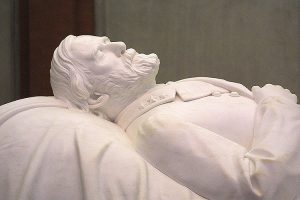Robert E. Lee, the great Civil War general, was on his deathbed when he took a deep breath and exhaled a final order: “Strike the tent.” These last words were those of a pilgrim whose life here on earth was spent sojourning. He knew that his beloved Virginia was never his home or final resting place. The picture he paints of a man breaking camp to head off in a new direction was one he’d experienced many times as a soldier serving on a military campaign. When the order’s given, it’s time to move on. To strike a tent was to pull its pegs, wind its guidewires, and fold the canvas into the pack. Lee wasn’t fleeing the earth. He wasn’t retreating or on the run. He was breaking camp for Kingdom come. So, what exactly was the tent that Lee was looking to have taken down and packed for the journey across the Jordan? We tend to understand a man’s essence to be found in his soul and we tend to think of his physical body as but a house; an instrument for our spirit’s expression. But when we die, what should be done with this house? What is a proper way to dispose of the “remains”. While the Bible doesn’t give clear directives on the question or post any prohibitions, our practices do say something about our worldview and our hope. This week’s article for discussion is Grave Signs, written by Russell D. Moore. This somewhat provocative essay by the president of the Southern Baptist Convention’s Ethics & Religious Liberty Commission, challenges its reader to grapple with the question of whether cremation is consistent with biblical Christianity. Our aim will not be to decide the right and wrong of the matter as much as it will be to use the issue as an exercise in understanding; a kind of theological obstacle course run. Please consider joining us for what will likely be a lively discussion on death. God bless our study!





